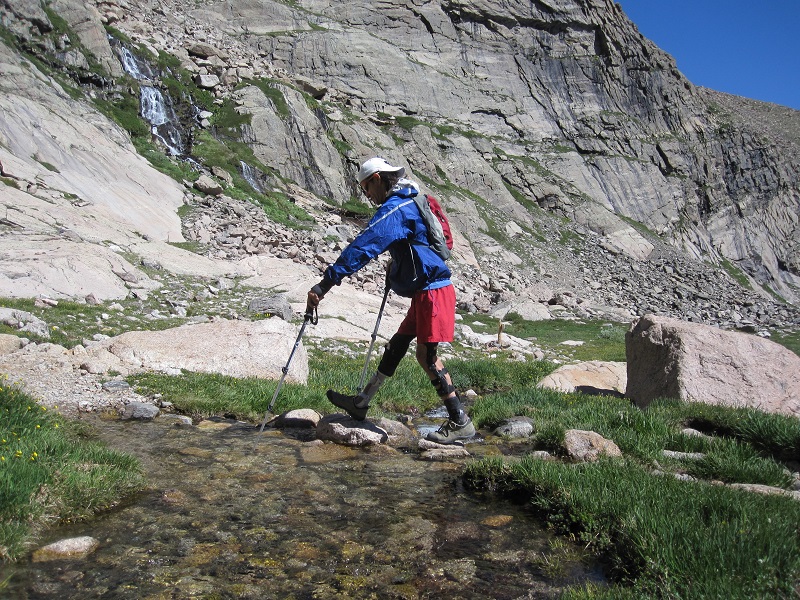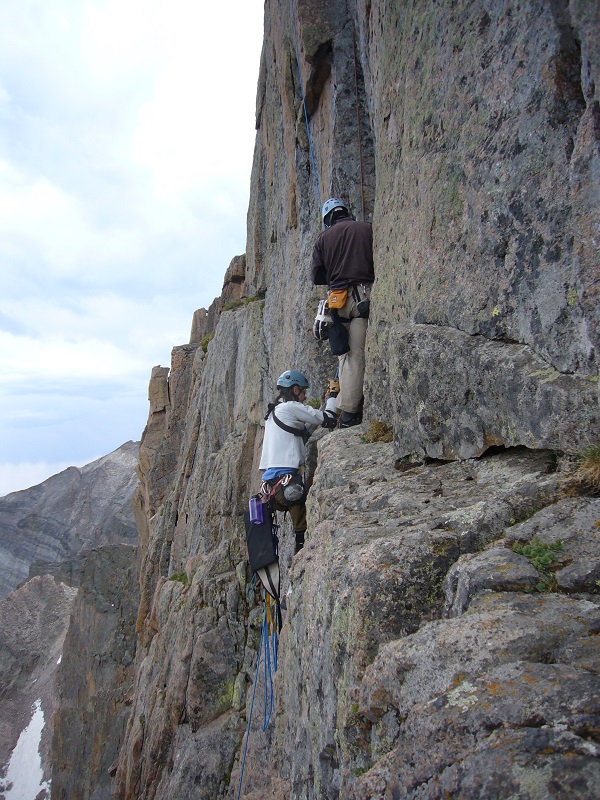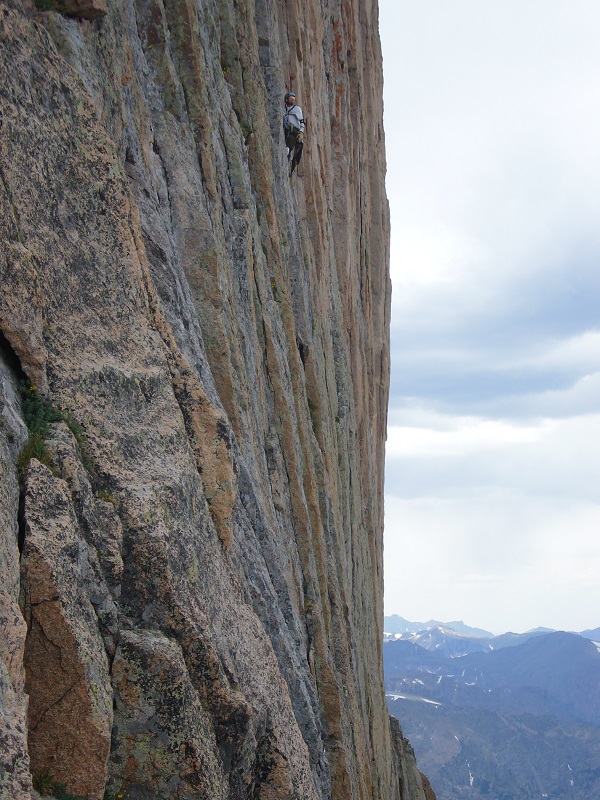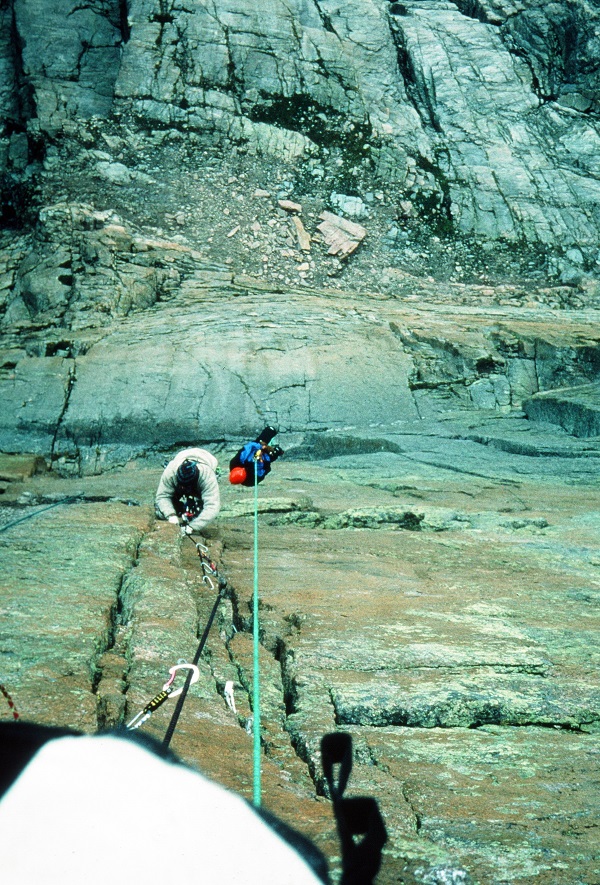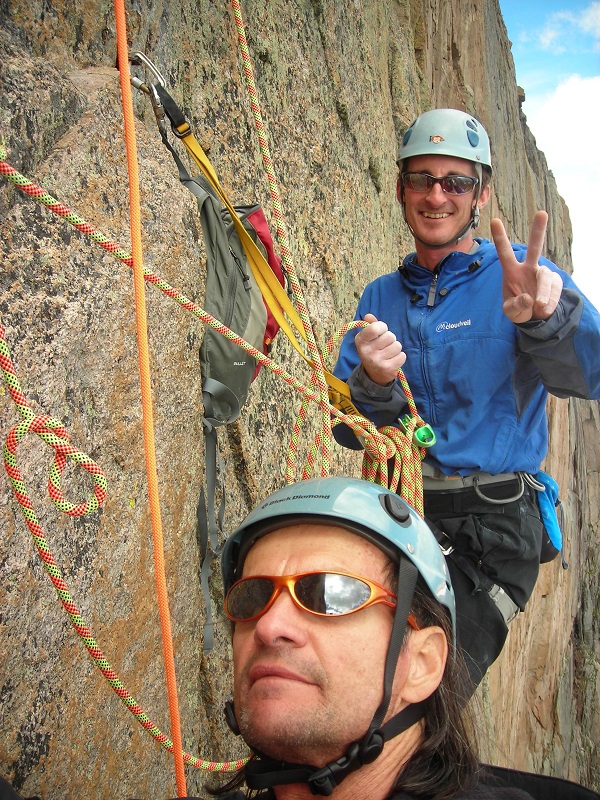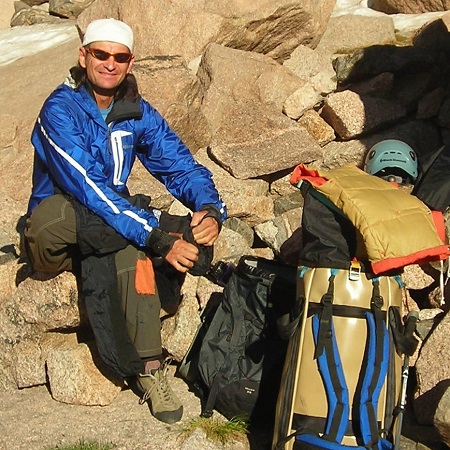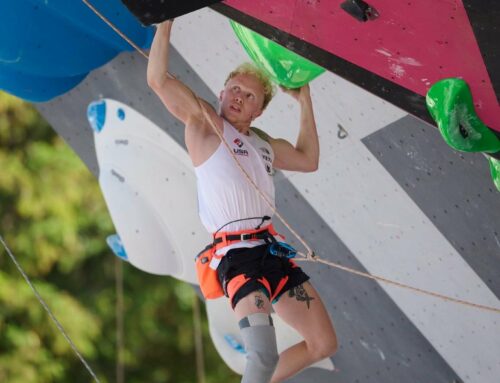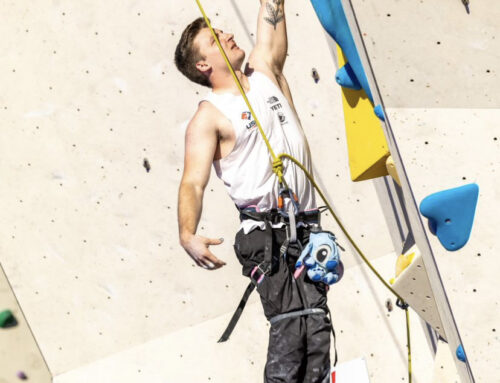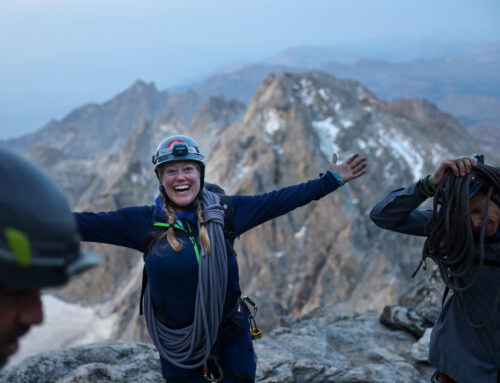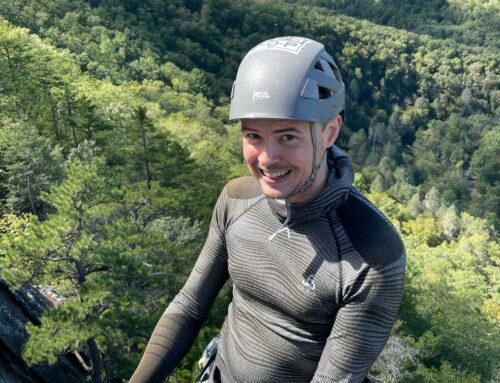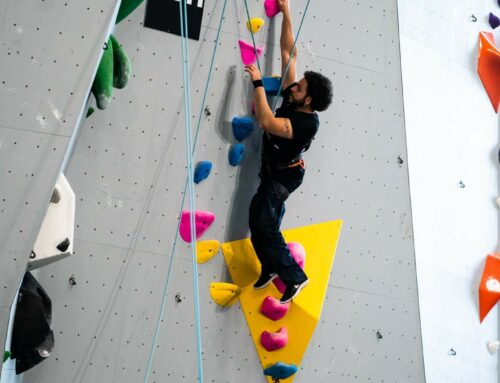First Adaptive Ascent of the Diamond
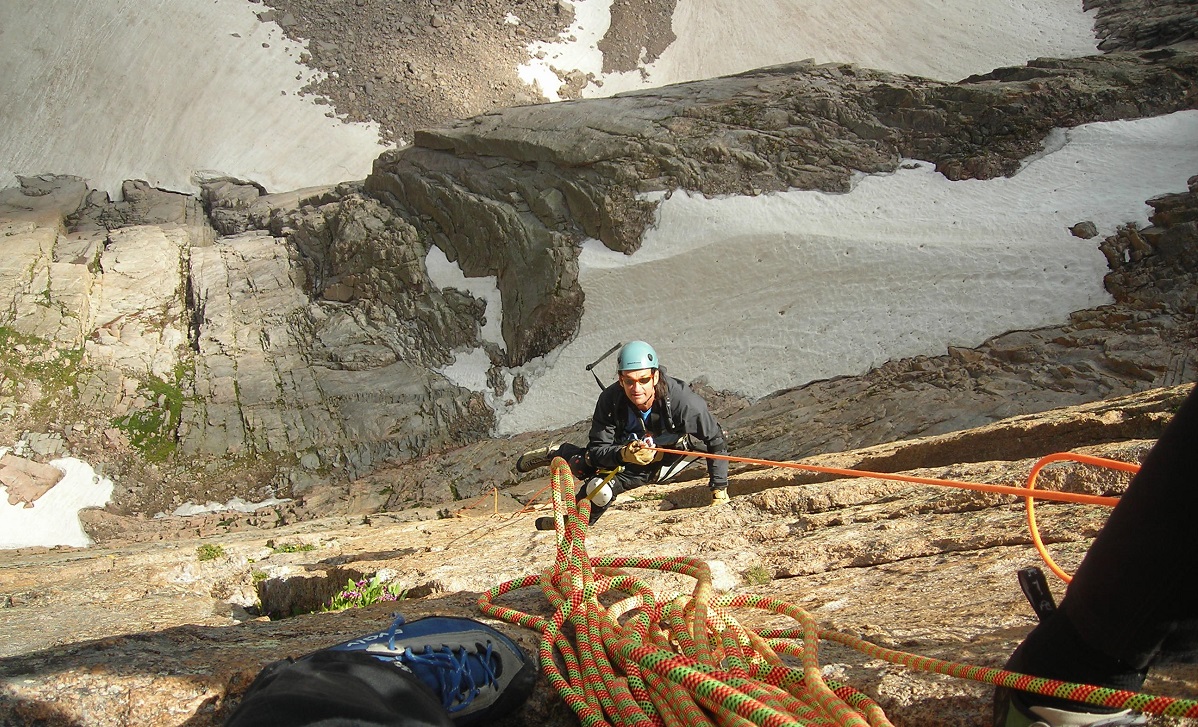
Written by Wayne Willoughby
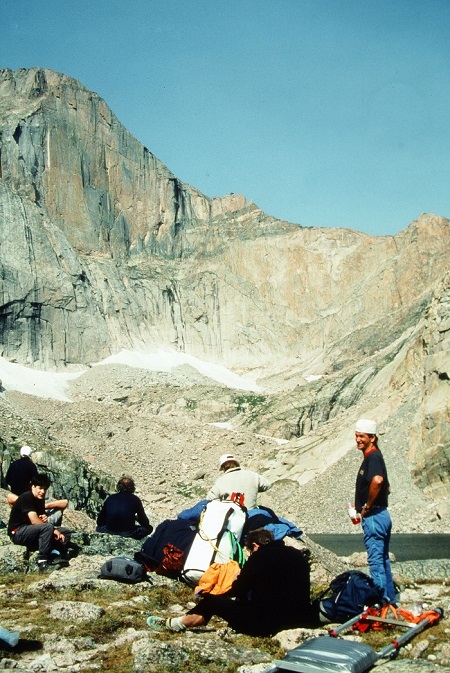 “The Diamond” has been called the most challenging big wall in the lower 48 – the weather above 13,000 feet is no small part of the reason why. The sheer and prominent east face of Longs Peak with more than 900 feet of vertical gain, the climb tops out at 14,255 feet in Rocky Mountain National Park.
“The Diamond” has been called the most challenging big wall in the lower 48 – the weather above 13,000 feet is no small part of the reason why. The sheer and prominent east face of Longs Peak with more than 900 feet of vertical gain, the climb tops out at 14,255 feet in Rocky Mountain National Park.

Climbing the Diamond was first brought up to me as a possibility by my friend Michael O’Donnell in the early ’80’s in Yosemite. Even though Michael once had a serious Winter epic after topping out, losing part of several toes to frostbite, his stories about what an incredibly powerful place it is captivated my imagination. I was drawn to it like a moth to a flame – in spite of my history with Paralytic Polio, Post Polio Syndrome and the inherent risks involved.
However, fate’s right hand got in the way of our plan, as so often happens in this life. In addition to debilitating PPS, I also spent the 80’s recovering from several serious injuries after having been hit by a car on my bicycle, again while riding my motorcycle, and then being seriously assaulted. If walking had been difficult for me before, it was almost impossible for anything other than short distances now. But my big wall ambitions continued to burn brightly and in 1990 I climbed Zodiac on El Cap for my first big wall.
Climbing the Diamond, with it’s 5+ mile approach at altitude was not going to happen without a lot of help, in the form of porters, to assist getting me in and out. This daunting prospect became simplified when Michael’s twin brother Pat put up a note on the bulletin board at his climbing gym, and suddenly there were many psyched, selfless climbers eager to be part of our big adventure. All we needed now was another climbing partner, and a permit. Logic would dictate that the former would be more difficult to find than the latter, but Bill Whitt, a close friend of Michael’s signed on immediately. When Michael went in to get the permit, he excitedly shared with the Ranger at the desk what our plan was. The Ranger’s superior overheard the conversation, and Michael was told that no adaptive climber had ever climbed the Diamond, or ever would – it was far too serious an undertaking. We were denied the permit. The following week Pat went in, put my name on the form for a permit but omitted the details about my physical reality, and we were in business!
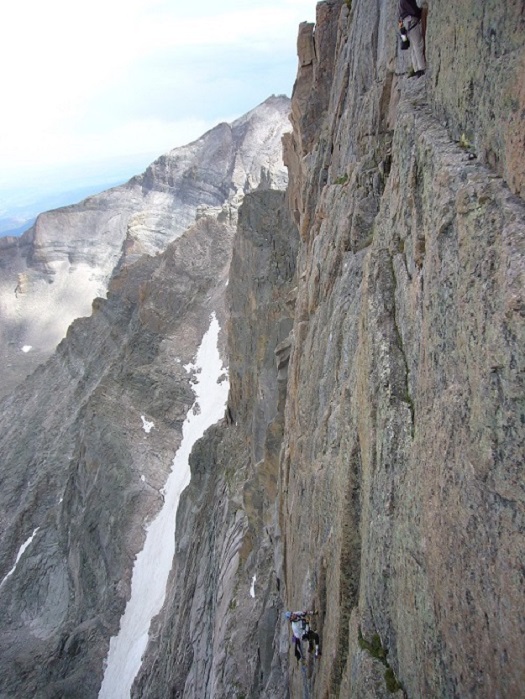
The Rosetta Stone that we lacked to make this happen was some kind of stretcher to carry me in on. Jeff Andres, one of the volunteers, came to the rescue with something a member of our crew dubbed, ‘the Tibetan Prayer Sled’. Jeff constructed it out of aluminum frames from old solar panels. Though I was nearly pitched off of it more than once on the hike in, I gripped the bars for all I was worth and relished the fact that I was somewhere that I had dreamt of visiting for decades, on the way to the greatest adventure of my life to date, with my old friend Michael, and a wonderful group of new friends who were all so thrilled to be part of this unlikely event. The trail after Chasm Lake wasn’t suitable for the sled, so I disembarked there and made my way toward the face, alternately crab crawling, walking in a halting, lurching manner, and doing a few boulder moves for vertical gain here and there. This section was especially fun. Once we arrived at the snowfield below the face where we would bivy before starting the next day, there was a sense of how serious an undertaking this was that coursed through my being. I reminded myself to breathe, and relax, and started really appreciating our surroundings. I realized how lucky I was to be there.
Before I could get too comfortable, a party above us who were dragging their haul bag across Broadway Terrace cut loose an avalanche of loose rock. My partners took off running for their lives. Not being afforded that luxury, I buried my face in the snow, and almost the instant that I felt the cold sting of the snow against my face, a rock the size of a bowling ball flew close enough above my head to be able to feel the wind created by its velocity. After things settled down my partners returned, and not much was said as we surveyed the surrounding snow, now pitted with rocks. I didn’t sleep a wink that night, gazing up at the Milky Way, and the jagged skyline of ancient rock in this magical cirque that the Diamond overlooks.
The following day we were basking in the warm Colorado sun as we made our way up the pitches to Broadway and for the first section of the route. We had been blessed by a day and a half of dry weather, but it wasn’t to last. A huge lenticular cloud appeared, and we knew that our dry weather was soon to be behind us. We just didn’t know how bad it was going to get. Setting up my ledge at the belay was excruciatingly difficult. I had lent it to a friend the year before for a winter ascent of El Cap and the bed had been torn in a windstorm. He had the bed repaired, but didn’t let me know that the ledge now parallelogramed! Though I was under the fly, all night long I hung in my harness from my daisy chain, that was clipped to the anchor, with my legs dangling below, unsupported by the ledge. Needless to say, that was a long night, but I did stay dry, no small thing when you at nearly 14,000 feet!
Morning arrived with a long enough reprieve from the rain to allow the ropes to dry out a bit while we ate breakfast and packed things up. As we moved toward the top, the storm that had been a lamb during the night turned into a lion. Suddenly we were in full on Patagonian conditions, 110 mile an hour gusts of wind buffeted us, while snow, sleet and hail alternately pounded us. The final push for the top was a memorable one to be sure – as was getting down from the top. When we finally arrived back at the parking lot someone there told us that the Rangers had heard about what we had done. They were so impressed that someone notified the press, not mentioning any of us by name, but only that an adaptive climber had climbed the Diamond for the first time. It went out on wire services all over the world. I have climbed the Diamond three additional times since then. On each one of those other ascents I made my way in and out powered only by my hiking poles, after years of dedication and hard work, and more than a few hard falls. The amount of rockfall that rained down on us from parties above on subsequent ascents hasn’t encouraged me to return. However, that ascent of D1, and my ascents of Pervertical Sanctuary with Michael Haag, and a link up on the Diamond in 2008 and D7 in 2009 with Kevin Stricker and David Russel remain highlights in my vertical career, and life in general. To quote Walter Bonatti; ‘Climbing is just a mechanism for us to dig deep into our souls to find our real spirit of joy and peace.‘
